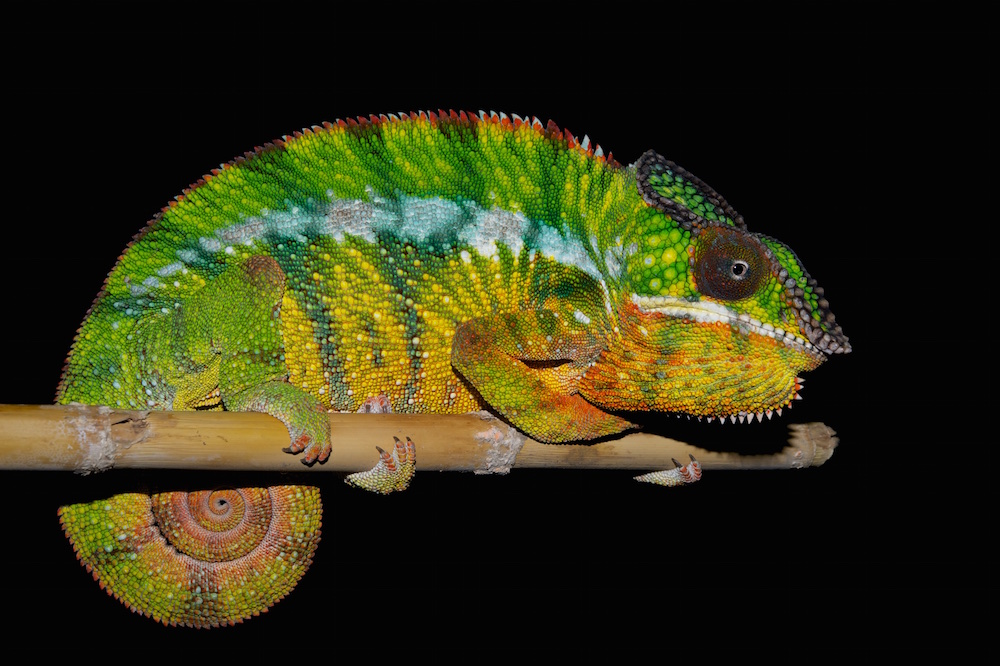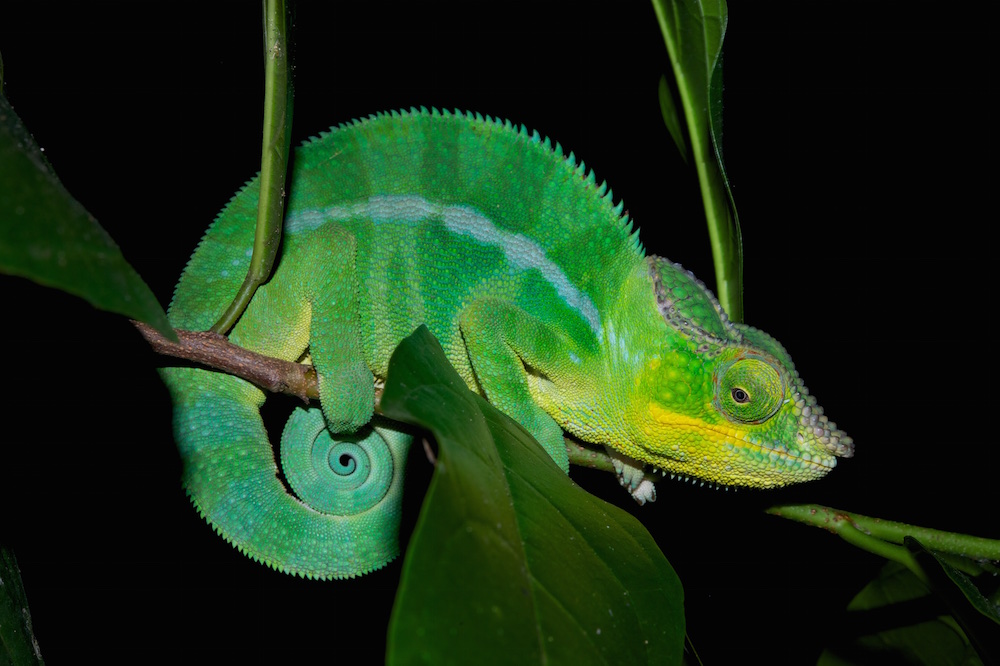Colorful Find: Madagascar Chameleon Actually 11 Distinct Species

The color-changing panther chameleon has long fascinated scientists, but there's more to the reptile than meets the eye: What was once considered to be one species is actually 11 distinct species of chameleon, a new study finds.
The colorful finding is the result of a long road trip around the island of Madagascar, in which researchers searched for panther chameleons (Furcifer pardalis) to include in the study.
"We travelled by car along paved and dirt roads and stopped each time an animal was spotted," the researchers wrote in the study. "In most cases, chameleons were spotted on the branches of trees and bushes along roads and rivers, as well as around villages." [See Photos of the 11 Distinct Chameleon Species]
The researchers found 324 panther chameleons in all. After taking a blood sample and a high-resolution photograph of each reptile, they released it back into the wild, the researchers said. (The researchers also included additional data from two panther chameleons found on Reunion Island, an island near Madagascar, and from 26 captive individuals that were part of the panther chameleon pet trade.)
The scientists did a genetic analysis, looking at the chameleons' mitochondrial DNA (the DNA passed down by mothers) and nuclear DNA (the DNA within the nucleus of a cell). They also did a mathematical analysis of each chameleon's colorful markings, based on the photos taken in the field.
They already knew that panther chameleons lived in separate groups around Madagascar, but the genetic analysis showed just how distinct these populations were. Each of the populations had distinct lineages, and showed very low interbreeding between other populations, the researchers found.
What's more, the mathematical analyses showed that subtle color patterns could predict each chameleon's distinct genetic lineage, adding support to the idea that chameleons living in different geographic populations were distinct species.
Get the world’s most fascinating discoveries delivered straight to your inbox.
The study shows that Madagascar still has hidden biodiversity, the researchers said. However, other studies have shown that the island is slowing down as a hotspot for new species evolution.
Furthermore, people in the pet trade may be putting the panther chameleon in danger. Many pet owners favor panther chameleons for their colors: Females and juvenile panther chameleons are tan-brown with hints of pink or orange, and adult males are larger and have several combinations of bright red, green, blue and yellow, the researchers said.
These striking colors, which are known to change prominently in males, "made F. pardalis a popular species on the U.S., European and Asian pet markets where color 'morphs' or 'locales' are often named after Malagasy villages and islands," the researchers wrote in the study.
But the new finding may help the newfound 11 different species survive. The researchers used their results to make a "simple visual classification key that can assist trade managers to avoid local population overharvesting," they wrote in the study.
To support research on chameleons and other small animals living in Madagascar, people can donate to Association Vahatra, a funding campaign managed by the Field Museum of Natural History in Chicago.
The study was published online Monday (May 25) in the journal Molecular Ecology.
Follow Laura Geggel on Twitter @LauraGeggel. Follow Live Science @livescience, Facebook & Google+. Original article on Live Science.

Laura is the managing editor at Live Science. She also runs the archaeology section and the Life's Little Mysteries series. Her work has appeared in The New York Times, Scholastic, Popular Science and Spectrum, a site on autism research. She has won multiple awards from the Society of Professional Journalists and the Washington Newspaper Publishers Association for her reporting at a weekly newspaper near Seattle. Laura holds a bachelor's degree in English literature and psychology from Washington University in St. Louis and a master's degree in science writing from NYU.



